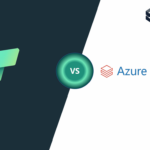Address
2nd Floor, 4, Vivek Vihar, Bajaj Nagar, Jaipur, India (302015)
Work Hours
Monday to Friday: 7AM - 7PM
Weekend: 10AM - 5PM
Address
2nd Floor, 4, Vivek Vihar, Bajaj Nagar, Jaipur, India (302015)
Work Hours
Monday to Friday: 7AM - 7PM
Weekend: 10AM - 5PM

Cloud computing is a rapidly growing technology that is changing the way businesses and individuals access, store, and manage data. In simple terms, cloud computing refers to the delivery of computing services, including servers, storage, databases, networking, software, analytics, and intelligence, over the internet (“the cloud”) to offer faster innovation, flexible resources, and economies of scale. Here are some key concepts and benefits of cloud computing:
Infrastructure as a Service (IaaS): This is the most basic form of cloud computing and refers to the provision of virtualized computing resources, such as servers, storage, and networking, over the internet. With IaaS, businesses can rent computing resources on-demand, without the need for large capital investments in hardware and infrastructure.
Platform as a Service (PaaS): PaaS builds on IaaS by providing a platform for developing, running, and managing applications. This includes the operating system, middleware, and development tools needed to create and deploy applications. With PaaS, businesses can focus on developing and deploying applications, without the need to manage the underlying infrastructure.
Software as a Service (SaaS): SaaS is the most advanced form of cloud computing and refers to the delivery of software applications over the internet. With SaaS, businesses can access software applications, such as email, customer relationship management (CRM), and enterprise resource planning (ERP), on-demand and pay for them on a subscription basis.
Private, Public, and Hybrid Cloud: Cloud computing services can be delivered in three different ways: private, public, and hybrid. A private cloud is a cloud environment that is dedicated to a single organization and is typically managed by the organization itself or a third-party. A public cloud is a cloud environment that is open to the public and is typically managed by a service provider. A hybrid cloud is a combination of private and public clouds, which allows organizations to take advantage of the best features of both.
Scalability and Elasticity: One of the key benefits of cloud computing is the ability to scale resources up or down as needed. This is known as scalability and elasticity. With cloud computing, businesses can add or remove resources, such as servers and storage, on-demand, without the need for large capital investments.
Cost-effectiveness: Cloud computing can be more cost-effective than traditional on-premises solutions. Businesses can pay for only the resources they need and can scale up or down as needed, which can lead to significant cost savings. Additionally, businesses do not need to invest in expensive hardware, software, and infrastructure, which can also lead to cost savings.
Security: Cloud providers have invested heavily in security infrastructure and employ teams of experts to ensure the security of their services. They also have compliance with various regulations and security standards such as SOC2, HIPAA, PCI-DSS, and ISO 27001.
Availability and Reliability: Cloud providers have multiple data centers and are built to ensure high availability and reliability of services. They also provide built-in disaster recovery and business continuity features.
Cloud computing is revolutionizing the way businesses access, store, and manage data, leading to faster innovation, more flexible resources, and cost savings. The growth of cloud computing has been driven by the increasing demand for more agile and cost-effective IT solutions, and the need to store and analyze large amounts of data. However, it is important to note that the use of cloud computing should be done responsibly, with consideration for data security, privacy, and compliance.
Cloud computing is revolutionizing various sectors by providing more agile and cost-effective solutions, and enabling organizations to store and analyze large amounts of data. Here are some examples of how cloud computing is impacting different sectors:
Healthcare: Cloud computing is enabling healthcare providers to store and analyze large amounts of patient data, leading to more accurate diagnoses and treatment plans. It is also helping to improve patient outcomes and reduce costs. Additionally, cloud-based telemedicine solutions are enabling remote consultations, which can improve access to healthcare for patients in rural and remote areas.
Retail: Cloud computing is enabling retailers to analyze large amounts of customer data, which can help them personalize the shopping experience and improve their inventory management. Additionally, cloud-based point-of-sale systems are enabling retailers to process transactions faster and more efficiently.
Finance: Cloud computing is enabling financial institutions to store and analyze large amounts of financial data, leading to more accurate risk management and fraud detection. Additionally, cloud-based banking systems are enabling banks to offer new services, such as mobile banking and real-time transactions.
Manufacturing: Cloud computing is enabling manufacturers to store and analyze large amounts of production data, which can help them improve their supply chain management and reduce downtime. Additionally, cloud-based manufacturing systems are enabling manufacturers to automate repetitive tasks, such as data entry and document processing.
Education: Cloud computing is enabling educational institutions to store and analyze large amounts of student data, which can help them improve the learning experience. Additionally, cloud-based learning management systems are enabling teachers to share resources and collaborate with other educators.
Media and Entertainment: Cloud computing is enabling media and entertainment companies to store and distribute large amounts of digital content, such as movies, music, and videos, on-demand. Additionally, cloud-based media management systems are enabling media companies to automate repetitive tasks, such as transcoding and content distribution.
Transportation: Cloud computing is enabling transportation companies to store and analyze large amounts of data, such as traffic and weather data, which can help them improve their route optimization and reduce downtime. Additionally, cloud-based transportation management systems are enabling transportation companies to automate repetitive tasks, such as tracking and dispatching.
In summary, cloud computing is revolutionizing various sectors by providing more agile and cost-effective solutions and enabling organizations to store and analyze large amounts of data. This is leading to improved efficiency, increased productivity, and reduced costs.



